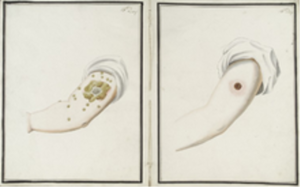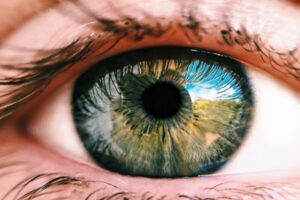By: Olivia Brado1, Luz Mariana Cumpa Gomez1, Shirin Dadina1, Katrina Miciek1, Priscilla Rubio1, and Elizabeth Schoemer1
1Trinity College, 2/14/21
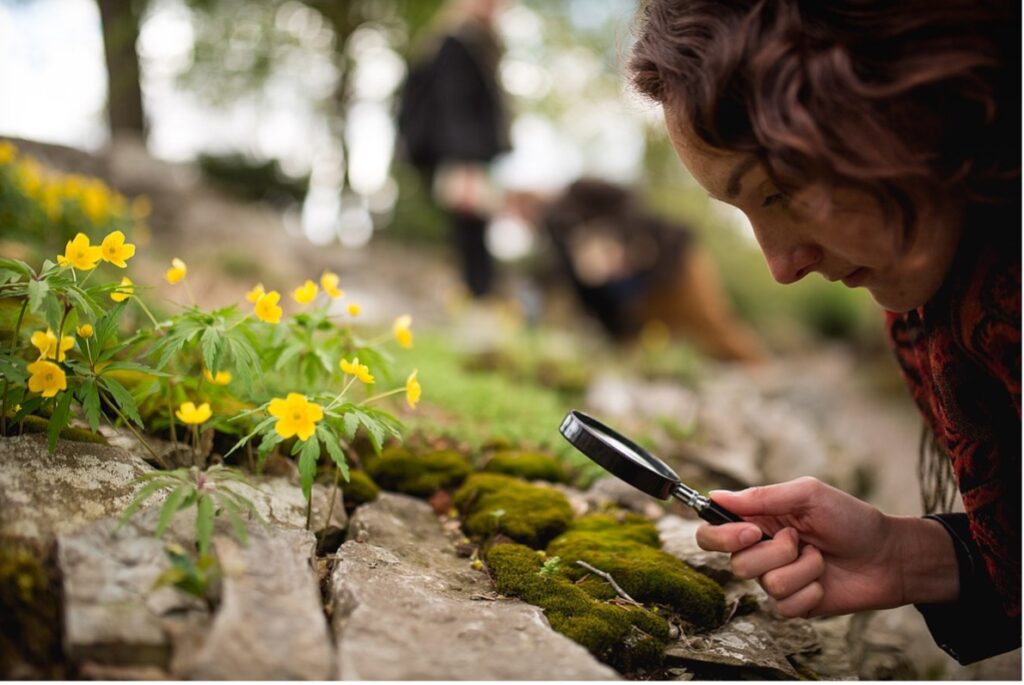
Figure 1: A woman studying wildlife to identify different species. Originally shot as part of a promotion for the citizen science event “Loodusvaatluste maraton” where citizens focus on recognizing and identifying wildlife species in pre-designated areas
Source: Wikimedia Commons
Introduction:
In a world of rapid technological advancement and a growing list of societal issues to address, scientific research is more essential than ever. Scientists are reaching further to collaborate with everyday citizens to collect groundbreaking scientific data. “Citizen science,” as defined by sociologist Alan Irwin in the 1990s, is a field that addresses the concerns of (non-scientist) citizens with experiments designed by citizens themselves (Irwin, 2018). Citizen science dates back millennia to ancient China where citizens tracked outbreaks of destroyed harvests to improve crop yield (Irwin, 2018). The discipline has grown into a global form of research with heavy public involvement in various projects. Citizen science allows scientists to collect data on a much larger scale while introducing a greater community to the scientific world. Whether it be installing nitrogen dioxide samplers at high altitudes in Belgium, capturing video information on species of flora/fauna, or collecting data on diseases by playing computer games, a growing number of people are spending time to help accelerate data analysis in ways that technological algorithms are unable to match (Irwin, 2018). Many researchers are specifically interested in educating young people by involving them in a wide range of projects to empower them and introduce them to scientific research early in their career. However, the field of citizen science is facing several challenges, namely attaining quality data from untrained citizens. Scientists that plan to continue working alongside citizens are continuously setting goals to set scientific standards for testing and data gathering to increase validity and professionalism. They are also working towards better standards for collaboration that better ensure ethics and quality control (Heigl et al., 2019). With a constant hunger for data, transparency, and accessibility in research, citizen science is an incredible tool that is propelling the process of discovery at a profound level.
The Rise of Citizen Science
Citizen science has existed in some form likely as long as humanity itself. Before the “professionalization of science,” which took place in approximately the past 150 years, science was only pursued out of niche interest rather than as a paid profession. For at least 3,500 years, Chinese citizens have contributed to the tracking of locust outbreaks; Japanese citizens have recorded the dates of the cherry blossom festival for at least 1,200 years; French winegrowers have recorded their grape harvests for at least 640 years (Miller-Rushing et al., 2012). One of the most well-known citizen science projects is the Audubon Society. In the early 1800’s, John Audubon’s ideas heavily influenced citizen science. At 15 years old, Audabon began to draw every bird he came across, collecting observations of various North American birds within their natural habitats [Figure 2). Now, one of the oldest examples of citizen science is the Christmas Bird Count sponsored by the National Audubon Society in which volunteers collect information about local populations of birds (Ullrich, 2012). In the late 19th century, science grew to be viewed as a professional career. Consequently, scientific projects became more separate from non-scientist citizens. However, increasing technological advances, from telegraphs to the internet, have made citizen science a global and accessible field (Miller-Rushing et al., 2012).

Figure 2: An American Redstart (Setophaga ruticilla), a commonly-found bird across much of North America. It is one of the birds observed and studied by the Audubon Society
Source: Wikimedia Commons
Into the modern-day, scientists continue to need help in collecting and analyzing data (“History of Citizen Science,” 2007). Fortunately, there have been significant increases in citizen involvement every year. Participation in these projects allows citizens of diverse experiences to expand their scientific comprehension; in many cases, participants come away with improved scientific literacy skills, a greater understanding of the scientific process, and a greater appreciation for the specific topic they researched (Keyle, 2018). In the last few years, citizen science has expanded even more rapidly with the widespread availability of “smart” technology, allowing more information to be shared digitally and rapidly (Ullrich, 2012). This method of outreach has shown to have many benefits for researchers and volunteers, many of which are later discussed in detail, that lead to discoveries once considered unfeasible. Engaging interested volunteers in data collection can lead to large data samples and the efficient completion of data collection, which would usually be a lengthy, arduous task. Moreover, input from non-experts can also provide unexpected insights into the current project as well as potentially providing inspiration for future research questions (Trinity College Dublin, 2019). Beyond the benefits available to researchers and participants alike, citizen science has a profound effect on society as a whole. It is a powerful tool in closing the gap between all-too-often inaccessible academia and the general public by creating an environment that reinforces the availability and comprehensibility of knowledge and knowledge production despite participant or reader background (Trinity College Dublin, 2019). The citizen involvement unifies science and community by encouraging deeper understanding of the world around us.
Current Examples of Citizen Science Projects
As citizen science becomes more and more accessible, its reach continues to grow, expanding to new audiences and various scientific fields. In medicine, it encompasses both the health of humans and several animal species as well as more specialized fields like neuroscience and psychiatry. Other projects delve into the world of social science and even economics as it relates to science and medicine.
In epidemiology, the project MalariaSpot focuses on speeding up malaria diagnosis. Generally, it takes around 30 minutes for a professional malaria diagnosis to be made. Especially in the dry season in tropical areas, when malaria is much more common, this can be overwhelming to scientists and inefficient in providing treatment. MalariaSpot is helping to address this by using citizen scientists to quickly identify parasites in blood smear images. The site itself consists of two modes: classic, where the participant identifies parasites in an image of a blood smear [Figure 3], and game, where the participant plays a “bubbles” app game while occasionally identifying a species of malaria parasite based on an image (“About | Malariaspot,” n.d.). Using data from over 12,000 games in 2012, the classic mode showed over a 99% accuracy for parasite counting when combining either 22 games from untrained citizens or 13 games from citizens who had been trained for one minute (Luengo-Oroz et al., 2012). For the game mode, a 2018 study of over 500,000 individual choices showed that a combination of at least 25 untrained player assessments resulted in a 99% accuracy for differentiation of malaria species for all but one that showed an 80% accuracy (Linares et al., 2019).
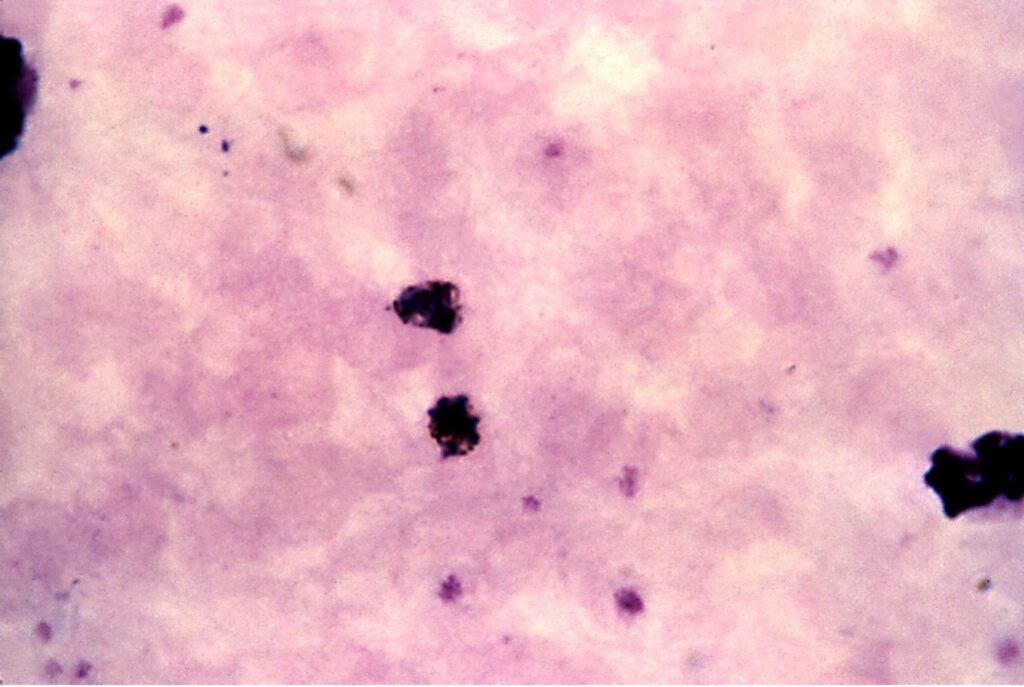
Figure 3: Similar to the images shown to MalariaSpot participants, this image depicts a thick blood smear containing both white blood cells (large, dark purple spots), and malaria parasites (small, purple spots in the upper left-hand corner). The species depicted here are Plasmodium malariae
Source: Wikimedia Commons
A similar project, Monkey Health Explorer, aims to count and identify different white blood cells types found in monkeys. Once a brief training video is complete, participants are shown magnified smears of monkey blood and must decide if the image is too crowded with blood cells, not full enough, or contains the right number of cells. From there, participants find and determine which types of white blood cells are present. Images are viewed by 15 people before they are retired to get more accurate results. The finalized data is compared to the larger local population of monkeys to determine which ones are “healthy,” which is then compared to “behavioral measures” to gauge how white blood cell counts may affect monkey socialization. This ties into a larger project which uses Rhesus macaques to study ties between genetics and social behavior. Because these monkeys are a good model organism for humans, the results from this larger project may be key to more closely understanding human social behavior and developmental disorders like autism spectrum disorder (Zooniverse, n.d.).
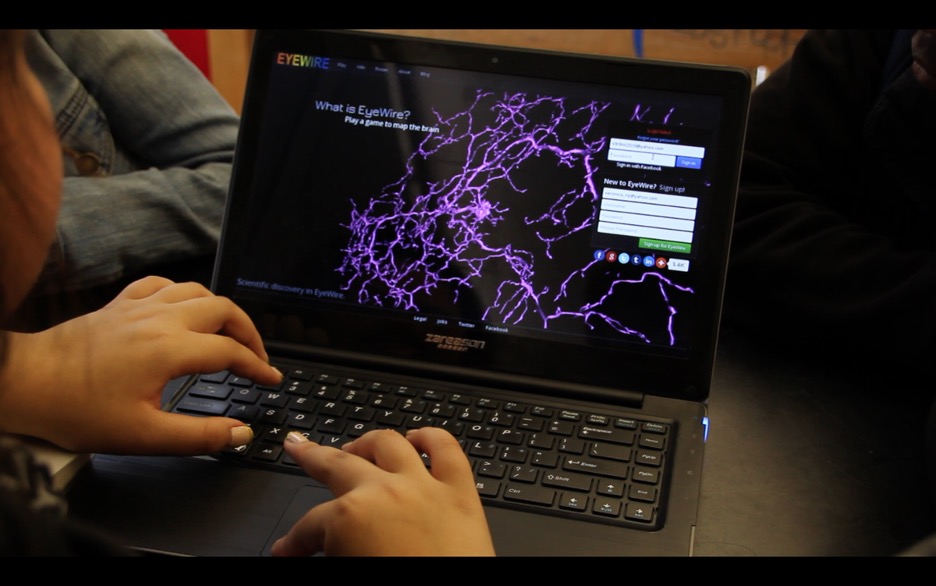
Figure 4: A student at Skyline High School in Oakland playing Eyewire, a citizen science project focused on mapping human neurons.
Source: Wikimedia Commons
In the field of neuroscience, Eyewire [Figure 4] has dominated the citizen science scene since 2012 as a gamified citizen science project taking aim at mapping the entire human connectome, or neural network system. Participants interact with three-dimensional cross-sections of dendrites to pinpoint flaws in neuron pathway identifications performed by artificial intelligence, successfully “shading” 950 neurons of mice to date (Wasik 2018). The principal investigator, Dr. Sebastian Seung, hopes to utilize data amassed through the project to improve computational technology for future machinery tasked with analyzing the connective nature of the nervous system. Aided with hundreds of thousands of users, Seung is optimistic that the applications of Eyewire will extend into answers surrounding many neurodegenerative diseases like Alzheimer’s and Parkinson’s whose cure may lie in differences of connections in the brain (Kim et. al., 2014). The crowdsourcing of Eyewire seeks to contribute to both disciplines of neural mapping and the technology lurking behind the scenes of said programming.
The Neureka Project takes a more psychiatric approach to understanding Alzheimer’s, with a focus on its early warning signs in hopes of stopping the disease’s progress (“The Neureka Project,” n.d.). Civilians interested in becoming citizen scientists sign up on the Neureka App, where they are given a series of tasks. The first one is the “Risk Factors Challenge”, where citizen scientists learn to identify risk factors of Alzheimer’s through a quiz. In the “Multi-Mood Challenge,” users take a survey where they report how they feel twice a day for eight weeks. By doing this, they help scientists better understand what interactions between different aspects of mood tell us about the likelihood of experiencing a depressive episode (“Neureka | Citizen Scientist | Brain Challenges,” n.d.). The “My Mental Health” assignment requires users to complete nine questionnaires about their mental health and how it affects their daily lives. Citizen scientists are also asked to play games that evaluate their mental skills such as memory and decision-making. Through all these assignments, scientists in the Gillan Lab collect information that allows them to get a better picture of how dementia manifests in its early stages.
Essential Medicine Project, an economics-focused project, aims to create a master database of affordable drugs that can be marketed in the U.S. Within the first few weeks of its existence, the project received 125 entries from volunteers via an online forum and survey allowing for the verification of 25 essential medicines (“E$$ential medicine$,” n.d.). As of June 26th, 2020, almost two years after the project began, the first stage of data collection on the anti-infection essential medicines has been completed (Scroggie & Golumbic, 2020). Immediately after, stage two began: collecting data on the history of medicines to better understand why drug accessibility has changed overtime. Certain mandated laws protect insurance and pharmaceutical companies’ privacy and negotiations thereby allowing them to rapidly increase drug costs. However, the chemical structure of these drugs exposes their true price without the pharmaceutical and insurance costly price increase through the comparison of the final drug price and the compound manufacturing price. By revealing the lack of transparency in the drug industry, this project aims to reinforce accountability of the formation of drug prices and hopefully lower them to a realistic standard.
While these projects provide a foundation for understanding the scope and success of citizen science, they are only a few examples of the expanse of projects currently available for citizen participation. Zooniverse, a website that provides access to a variety of citizen science efforts, contains projects focused on everything from graphing variable star behavior to studying biodiversity from old paintings of fish (“Projects,” n.d.). The world of citizen science offers projects bound to pique anyone’s interest.
Advantages to Citizen Science
The large data samples that scientists collect through citizen science projects allows them to achieve more accurate study results. For instance, according to Dr. Claire Gillan and Dr. Nathaniel Daw (2016), modern psychiatry relies mainly on the self-reported symptoms of patients, which often leads to an incomplete picture of the underlying psychiatric disorder. For instance, the attribute of “getting stuck in their habits” has been observed in patients of various diagnoses; however, this assumes that symptoms of each psychiatric disorder are independent from one another. By instead examining 1,413 responses to symptom questionnaires online, Gillan and Daw were able to examine the frequent overlap of psychiatric disorders. As a result, they were able to track how symptoms related to an underlying disorder, rather than the typical method of relating underlying disorder to symptoms. Therefore, they were able to offer potential improvements to psychiatric care based on this information (Gillan & Daw, 2016). By making it possible to reach thousands of people, citizen science is helping reduce the lack of specificity in psychiatric diagnosis and increase the beneficial effect of receiving psychiatric treatment. Through citizen science, scientists are able to collect larger data sets and therefore notice patterns they had previously overlooked in laboratory settings or that only appear in real-life scenarios.
Although having large data sets is helpful and can lead to more specific results, they are not always easy to manipulate and understand. Categorizing thousands of images or recordings can take years if scientists only have a few people working with them. That is when citizen science becomes particularly helpful. If scientists have thousands of people helping them classify their data, it becomes viable for them to work with big data samples (Allen, 2012). With several people judging the same data, the chances that it will be classified correctly also increases. Error can be minimized and a consensus on what is the most suitable classification can be reached.
Citizen science can also be very cost-effective. While lab-based studies are typically both costly and time-consuming, many citizen science projects utilize affordable options such as online surveys, websites, or applications (Gillan & Daw, 2016). A study done in 2015 revealed that even the smallest project studied received 1,890 hours of unpaid labor in its first 180 days; in the same time span, the largest project received over 54,000 hours of unpaid labor. It is estimated that citizen science labor saved the studied projects an estimated average of $220,547 in only their first 180 days being public. Because many of these projects continued past this, the true savings on each project is estimated to be much larger (Sauermann & Franzoni, 2015). It is not only free for civilians to engage in citizen science, but scientists also get to conduct studies at a relatively affordable price.
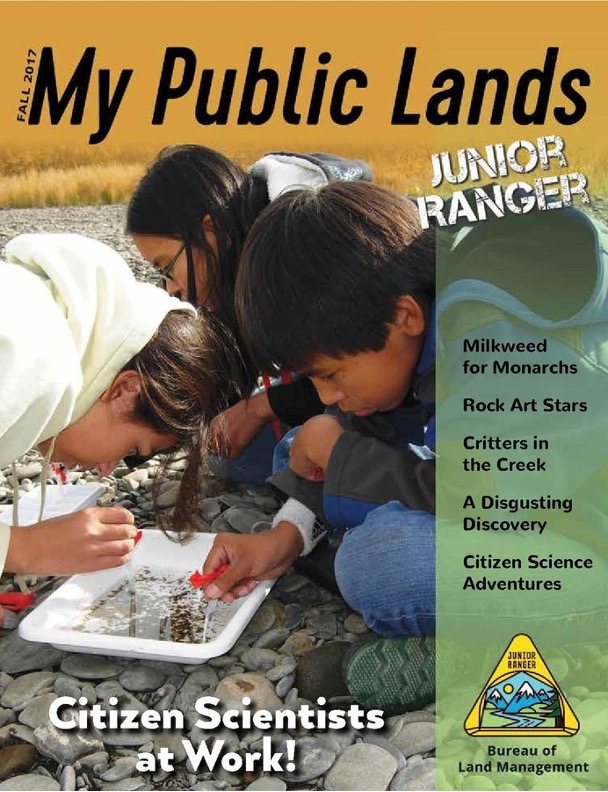
Figure 5: A magazine cover depicting a young group of “citizen scientists at work.” Introducing young people to citizen science reinforces the idea that anyone is capable of doing citizen science, regardless of age or educational background.
Source: Wikimedia Commons
Because of its far reach and easily accessible interfaces, citizen science demonstrates that science is accessible for all. The misconception that only extremely bright individuals can become scientists leads teenagers to believe that they are not “smart enough” to do science. According to the ASPIRES Project, more than 80% of young people agree that “scientists are brainy” (Arney, 2018). Furthermore, a survey conducted in 2017 showed that fewer than half of the people surveyed were confident that they could perform “science process tasks,” and this number decreased with age (Lewandowski et al., 2017). Citizen science is debunking this stereotype. Citizen scientist themselves help to collect data, and are the ones actually doing the science, regardless of their actual educational background [Figure 5]. In the Manatee Project, for example, non-scientists are tasked with listening to the recordings of manatee vocalizations and using their best judgment to classify them as either a “manatee call,” mastication (chewing) sound, both, or neither (“Manatee Chat,” n.d.). Citizen science projects are an engaging, accessible way of showing people that anyone can be a scientist.
Drawbacks to Citizen Science and Potential Solutions
Citizen science, although it has many benefits, also comes with some faults, both in terms of actual data collection and in its attempt to be accessible to all people. Firstly, there are simply too many people who contribute to citizen science projects to closely monitor all of them, so the quality of data may not always be good and consistent. (MacDonald, 2018). Citizen scientists often have limited training in the field they are completing a project in, resulting in bad data. Furthermore, biases play a role in data collection and analysis (Conrad & Hilchey, 2011). Ordinary people have not been trained to be aware of and how to eliminate their own biases, leading to a critical of objectivity. Beyond its inconsistency, the gathering of data is sometimes impractical. If any special equipment is used, then the average person cannot contribute, which limits what kinds of studies can make use of citizen science (MacDonald, 2018). Oftentimes, the work that goes into setting up a study in a way that is conductive to citizen science does not pay off. As a result, journal articles that use data gathered or analyzed by citizen scientists are relatively uncommon (Conrad & Hilchey, 2011).
The major allure of citizen science is its accessibility for all people to participate, provided they have an interest in the topic. Supposedly, no formal training or education is needed; however, citizen science is done predominantly by people with higher education levels. Approximately one third of citizen science participants between ages 25 and 55 attended and graduated from a university, while 65% of participants in citizen science had received tertiary education (Haklay, 2018). The lack of true representation suggests that citizen science projects are not fully accessible to everyone who may be interested. While the disparity in representation may be due to a lack of “appropriate” projects, it may also stem from the difficult relationship between the scientific establishment and minority groups in the United States. For instance, a 2010 study focused on barriers of research participation in black adults showed that mistrust in researchers and research projects diminishes their participation in scientific studies. This likely stems from previous atrocities committed by scientists and scientific communities. For example, the Tuskegee Study, a study that lasted 40 years in which participants, the majority of which had syphilis, were misinformed about the contents and purpose of the study. Even after the discovery of penicillin, the drug of choice to cure syphilis, the participants were not offered treatment or the opportunity to exit the study (Tuskegee Study – Timeline – Cdc – Nchhstp, 2020). Even more recent studies, although not containing egregious ethical errors, do continue to be ignorant of relevant cultural norms in designing studies. For instance, one team attempted to study a treatment for afterburn. However, the researchers were not aware of the common practice in black communities of using clippers to trim beards, which would potentially affect their results but definitely did display their ignorance, and consequent exclusion, of minority groups in their study (Scharff et. Al., 2010).
Another problem is that most participants in citizen science have low engagement with the work. For example, of those registered to be part of the iSpot projects, 1% of participants contributed almost all of the data, while about 9% contributed infrequently, and up to 90% never contributed (Haklay, 2018). Rather than supporting the notion that citizen science is open to all people who are interested in the project, most of the data seems to stem from a small, dedicated group.
Despite the aforementioned drawbacks of using untrained citizens for scientific research, there are ways easily available to address and correct most of the problems. Generally, citizen data varies from professional data around 20-50% of the time, resulting in an average of 73% of citizen-collected data being of professional quality (MacDonald, 2018). It is possible that this accuracy can be improved by quickly teaching the participants to be able to complete the necessary tasks more easily and accurately. In one instance, MalariaSpot found that citizens that underwent only one minute of training had more accurate results than those that had no training (Luengo-Oroz, et al., 2012). Additionally, the accuracy of final results could perhaps be improved by comparing it to a sample of professionally collected data, which would allow the differences between professionally and unprofessionally collected data and the extent of these differences to be identified (MacDonald, 2018).
The other issue to address is that of uneven participation. However, a 2018 report suggested that the majority of participants in citizen science projects were white and had high levels of education, although the demographics of participants is rarely recorded (Mervis, 2018). In order for citizen science to be more effective, it is imperative that the participants better reflect the multiplicity of identities found in society. As previously discussed, the lack of representation implies issues in accessibility as well as mistrust in science. In order for a citizen to participate in such a project, they must be aware of it, motivated to participate, and the project must be appropriate for them (West & Pateman, 2016). Tailoring projects to be appealing to people of all backgrounds and providing some sort of compensation, whether it be monetary or otherwise, may allow for a more equitable array of demographic groups to participate.
The Future of Citizen Science
Gazing towards the future, citizen science is shifting towards increased sociocultural awareness. It is likely that the use of citizen science by organizations reliant on large-scale data farming will continue to increase because of many of the benefits already discussed, such as the low costs of citizen science and its ability to encourage civilian education (Zhou et. al., 2020).
With the growing prevalence of dialogue concerning race and culture, scientists are working for the diversification of participants and learning the motivations by which individuals are governed. When addressing the areas posed by cultural and geographical differences, current citizen science platforms are working to incorporate various language settings and technology compatible with a variety of hardware (Newman et. al., 2011). To remain observant of varying cultural and social norms, new scientific research models need to become more cognizant of community needs. For example, anthropologists in Chiapas, Mexico failed in garnering support from the Mayan people of the region for the implementation of ethnobotanical gardens and flora tracking due to the lack of a boots-on-the-ground mentality when collaborating with indigenous communities; rather than working alongside the Mayan people, the anthropologists spoke over them (Mueller et. al. 2012). Situations like this ought to be avoided by scientists truly collaborating with communities—allowing the participants to have some voice in the process of data collection and an increase in education about and respect for cultural norms of the communities being studied or collaborated with.
Aside from a cultural cognizance, determining psychological catalysts that cultivate continued involvement in research projects is essential. Innovative feedback designs are improving to encompass aspects of “perceived enjoyment, perceived meaning, and self-expansion” through a task or self-oriented aspects such as gamification, or the ability to make data collection into an interactive game, and virtual encouragement (Zhou et al., 2020). By making citizen science available to everyone regardless of culture or language, scientists are forced to contend with the multifaceted humans that expanding science is dependent on.

Figure 6: Part of the promotional shoot for citizen science event “Loodusvaatluste maraton.” The citizen scientists pictured are using the app “Legulus” to help identify and log their observations.
Source: Wikimedia commons
Citizen science will continue to benefit and grow with technological developments [Figure 6]. Mass data collection poses pertinent issues, but new techniques entering the market, like location services and accessible mobile apps, increase the efficiency of citizen science (Newman et al. 2011). To address inaccuracies generated by phone applications, scientists will also need to capitalize on improved analytical skills to frequently identify and addresses these errors via a peer-review process. This will help eliminate any inaccuracies due to human error or any confusion resulting from the presentation of data or media within the app itself. Furthermore, in citizen science apps, users may be motivated by design features such as taskbars denoting completion and leader boards that provide a competitive edge (Zhou et al., 2020).
Overall, citizen science presents a great challenge, that comes with great benefits, to the scientific community. While it faces the existing barriers of mistrust in science and the lack of equal representation and participation across demographic groups, citizen science attempts to bridge the gap between the scientific community and the general population. Moreover, citizen science has allowed for larger data sets, faster analysis, and an overall better application of large-scale projects. As the field continues to grow, so do its applications and its potential benefits for the scientific community and the world alike.
References
About | malariaspot. (n.d.). Retrieved December 18, 2020, from https://malariaspot.org/en/about/
Allen, S. (2012, October 8). Zooniverse lets citizen scientists analyze large datasets. American
Association for the Advancement of Science
https://www.aaas.org/zooniverse-lets-citizen-scientists-analyze-large-datasets
Arney, K. (2018). Not ‘clever enough’ to be a scientist? Nonsense. RSC Education.
https://edu.rsc.org/feature/not-clever-enough-to-be-a-scientist-nonsense/3008870.article
Conrad, C. C., & Hilchey, K. G. (2011). A review of citizen science and community-based environmental monitoring: Issues and opportunities. Environmental Monitoring and Assessment, 176(1–4), 273–291. https://doi.org/10.1007/s10661-010-1582-5
E$ential medicine$. (n.d.). Breaking Good. Retrieved December 30, 2020, from https://www.breakinggoodproject.com/essentialmedicines
Gillan, C. M., & Daw, N. D. (2016). Taking psychiatry research online. Neuron, 91(1), 19-23. https://doi.org/10.1016/j.neuron.2016.06.002
Haklay, M. (2018). Participatory citizen science. In M. Haklay, S. Hecker, A. Bowser, Z. Makuch, J. Vogel, & A. Bonn (Eds.), Citizen Science (pp. 52–62). UCL Press. https://www.jstor.org/stable/j.ctv550cf2.11
Heigl, F., Kieslinger, B., Paul, K. T., Uhlik, J., & Dörler, D. (2019). Opinion: Toward an international definition of citizen science. Proceedings of the National Academy of Sciences, 116(17), 8089–8092. https://doi.org/10.1073/pnas.1903393116
“History of Citizen Science.” CosmoQuest, Web. Dec.2020. cosmoquest.org/x/about-cosmoquest/history-of-citizen-science/.
Irwin, A. (2018). No PhDs needed: How citizen science is transforming research. Nature, 562(7728), 480–482. https://doi.org/10.1038/d41586-018-07106-5
Keyles, Shayna. “Citizen Science: An Important Tool for Researchers.” Science Connected Magazine. 13 Sept. 2018. Web. 30 Dec. 2020. https://magazine.scienceconnected.org/2018/09/citizen-science-important-tool/.
Kim J. S., Greene M. J., Zlateski A., Lee K., Richardson M., Turaga S. C., Purcaro M., Balkam M., Robinson A., Behabadi B. F., et al. (2014) Space–time wiring specificity supports direction selectivity in the retina. Nature, 509(7500),331.
Lewandowski, E., Caldwell, W., Elmquist, D., & Oberhauser, K. (2017). Public Perceptions of Citizen Science. Citizen Science: Theory and Practice, 2(1), 3. DOI: http://doi.org/10.5334/cstp.77
Linares, M., Postigo, M., Cuadrado, D., Ortiz-Ruiz, A., Gil-Casanova, S., Vladimirov, A., García-Villena, J., Nuñez-Escobedo, J. M., Martínez-López, J., Rubio, J. M., Ledesma-Carbayo, M. J., Santos,
A., Bassat, Q., & Luengo-Oroz, M. (2019). Collaborative intelligence and gamification for on-line malaria species differentiation. Malaria Journal, 18(1), 21. https://doi.org/10.1186/s12936-019-2662-9
Luengo-Oroz, M. A., Arranz, A., & Frean, J. (2012). Crowdsourcing malaria parasite quantification: An online game for analyzing images of infected thick blood smears. Journal of Medical Internet Research, 14(6), e167. https://doi.org/10.2196/jmir.2338
MacDonald, J. (2018, November 25). A scientific look at citizen science. JSTOR Daily. https://daily.jstor.org/a-scientific-look-at-citizen-science/
Manatee Chat (n.d.). Zooniverse. Retrieved December 30th, 2020 from https://www.aaas.org/zooniverse-lets-citizen-scientists-analyze-large-datasets
Mervis, J. (2018, November 1). Citizen science needs to look more like society, report says. Science | AAAS. https://www.sciencemag.org/news/2018/11/citizen-science-needs-look-more-society-report-says
Miller-Rushing, A., R. Primack, and R. Bonney. (2012). The history of public participation in ecological research. Frontiers in Ecology and the Environment 10(6): 285–90. doi: 10.1890/110278.
Mueller, M. P. , Tippins, D. , Bryan, L. A. (2011). The Future of Citizen Science. Democracy and Education, 20 (1), Article 2. Available at: https://democracyeducationjournal.org/home/vol20/iss1/2
Neureka | citizen scientist | brain challenges. (n.d.). Neureka. Retrieved January 23, 2021, from https://www.neureka.ie
Newman, G., Wiggins, A., Crall, A., Graham, E., Newman, S., & Crowston, K. (2012). The future of citizen science: Emerging technologies and shifting paradigms. Frontiers in Ecology and the
Environment, 10(6), 298–304. https://doi.org/10.1890/110294 Projects. (n.d.). Zooniverse. Retrieved January 19, 2021, from https://www.zooniverse.org/projects
Sauermann, H., & Franzoni, C. (2015). Crowd science user contribution patterns and their implications. Proceedings of the National Academy of Sciences, 112(3), 679–684. https://doi.org/10.1073/pnas.1408907112
Scharff, D. P., Mathews, K. J., Jackson, P., Hoffsuemmer, J., Martin, E., & Edwards, D. (2010). More than Tuskegee: understanding mistrust about research participation. Journal of health care for the poor and underserved, 21(3), 879–897. https://doi.org/10.1353/hpu.0.0323
Scroggie, K., & Golumbic, Y. (2020). TheBreakingGoodProject/Essential-Medicines. BreakingGood. https://github.com/TheBreakingGoodProject/Essential-Medicines (Original work published 2020)
The Neureka Project. (n.d.) Neureka. Retrieved December 29th, 2020 from https://www.neureka.ie/ Trinity College Dublin. “Benefits of Citizen Science.” Parthenos Training, 11 Feb. 2019. Web. Dec.2020. training.parthenos-project.eu/sample-page/citizen-science-in-the-digital-arts-and-humanities/what-is-citizen-science/potentials-and-challenges-of-citizen-science/.
Tuskegee study—Timeline—Cdc—Nchhstp. (2020, December 10). https://www.cdc.gov/tuskegee/timeline.htm
Ullrich, C. (2012, May 16). Citizen science. National Geographic Society; National Geographic. http://www.nationalgeographic.org/encyclopedia/citizen-science/
Wasik, S. (2018). Modeling biological systems using crowdsourcing. Foundations of Computing and Decision Sciences, 43(3), 219–243. https://doi.org/10.1515/fcds-2018-0012
West, S., & Pateman, R. (2016). Recruiting and retaining participants in citizen science: What can be learned from the volunteering literature? Citizen Science: Theory and Practice, 1(2), 15. https://doi.org/10.5334/cstp.8
Zhou, X., Tang, J., Zhao, Y. (Chris), & Wang, T. (2020). Effects of feedback design and dispositional goal orientations on volunteer performance in citizen science projects. Computers in Human Behavior, 107, 106266. https://doi.org/10.1016/j.chb.2020.106266
Related Posts
Magnetic Venus Flytraps: a New Diagnostic Tool for Agriculture
Figure 1: An image of a Venus Flytrap plant (Dionaea...
Read MoreEdward Jenner, Cowpox Inoculation, and the History of Vaccines
Figure 1: Comparison of smallpox (left) and cowpox (right) inoculations...
Read MoreWhen the Brain Loses a Sense, How Does it Compensate?
Source: Wendel Moretti The brain plays a crucial role in...
Read MoreOlivia Brado1, Luz Mariana Cumpa Gomez1, Shirin Dadina1, Katrina Miciek1, Priscilla Rubio1, and Elizabeth Schoemer1


